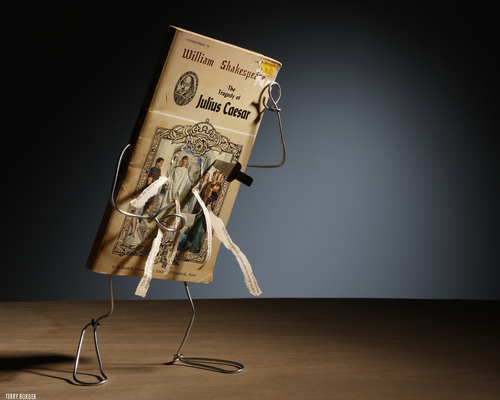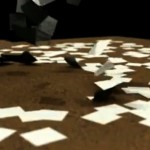Happy Pi Day! Let’s celebrate with Vi Hart, Shakespeare, and Borges:
http://www.youtube.com/watch?v=uXoh6vi6J5UI’ve seen plenty of photos of the Cristo Redentor statue in Brazil, but it wasn’t until I read the BBC’s feature on this Art Deco icon, that I ever paused to wonder what it was made of. Take a moment and make a guess, and then highlight the text below for the reveal:
It’s reinforced concrete covered in tiny stone mosaic.
The article is full of that kind of neat technical detail, everything from rollover reveals of the stairs within the statures to the details and difficulties of shielding the structure from lightening.
If the Cristo Redentor is a massive art project, than this next link is a….
…ok, I really can’t do a reasonable transition between that statue and the guy who does humorous, low-budget cosplay, but, gosh darn it, isn’t he charming? I mean seriously:
John Carlos Baez did a really interesting interview with Luke Muelhauser, where Baez gave good advice on how to solve problems:
(1) Learn a lot. Try to understand how the whole universe works, from the philosophical, logical, mathematical and physical aspects to chemistry, biology, and the sciences based on those, to the historical sciences such as cosmology, paleontology, archaeology and history, to the social sciences such as psychology, sociology, anthropology, politics and economics, to the aspects that are captured best in literature, art and music.
It’s a never-ending quest, and obviously it pays to specialize and become more of an expert on a few things – but the more angles you can take on any subject, the more likely you are to stumble on good questions or good answers to existing questions. Also, when you get stuck on a problem, or get tired, it can be really re-energizing to learn new things.
(2) Keep synthesizing what you learn into terser, clearer formulations. The goal of learning is not to memorize vast amounts of data. You need to do serious data compression, and filter out the noise. Very often people will explain things to you in crappy ways, presenting special cases and not mentioning the general rules, stating general rules incorrectly, and so on.
Speaking of problem solving, Wonkblog covered an interesting methodological approach to determining who the world’s richest person has ever been:
We do not have an exchange rate that would convert Roman sesterces or asses or Castellan seventeenth-century pesos into dollars of equal purchasing power today. Even more, what ‘equal purchasing power’ might mean in that case is far from clear. ‘Equal purchasing power’ should mean that one is able to buy with X Roman sesterces the same bundle of goods and services as with Y U.S. dollars today. But not only have the bundles changed (no DVDs in Roman times), but were we to constrain the bundle to cover only the goods that existed both then and now, we would soon find that the relative prices have changed substantially. Services then were relatively cheap (because wages were low); nowadays, services in rich countries are expensive. The reverse would be true for bread or olive oil.
Thus, to compare the wealth and income of the richissime in several historical periods, the most reasonable approach is to situate them in their historical context and measure their economic power in terms of their ability to purchase human labor (of average skill) at that time and place.
You’ll need to click through to find out who this metric ranked as number one.
io9 was the cause of my discovering Terry Border’s art project to make classic paperback books reenact their own stories, as below:
Sing us out, Vi!
http://www.youtube.com/watch?v=4C9PALaDh2UHappy Pi Day! It’s half as good as Tau Day!
For more Quick Takes, visit Conversion Diary!
















